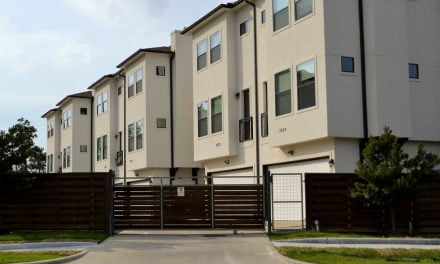The past 18 months have seen both record-low foreclosures and historically low inventory. That’s all about to change.
The federal eviction moratorium covered most homeowners through the end of July 2021. After numerous extensions, homeowners with a federally-backed mortgage (such as those owned by Fannie Mae or Freddie Mac) saw these protections lift on the moratorium’s final expiration date of July 31, 2021.
Editor’s note — While servicers of delinquent Federal Housing Administration (FHA)-insured mortgages may begin the foreclosure process following the expiration of the foreclosure moratorium, these homeowners continue to have protection from eviction due to foreclosure through September 30, 2021. [Mortgagee Letter 2021-19]
Even with the foreclosure and eviction protections at an end, many delinquent homeowners are still able to avoid foreclosure through forbearance.
Roughly 1.5 million homeowners are currently protected from foreclosure under a forbearance plan, representing 3.1% of all mortgages as of the first week of September 2021, according to the Mortgage Bankers Association (MBA).
Under a forbearance plan, the servicer agrees to hold off on foreclosure while the homeowner attempts to bring the mortgage current. As long as the plan continues, the homeowner may remain in the home with the hope of becoming current and avoiding foreclosure. However, when the plan expires, the homeowner needs to resume payments under the payment plan agreed to with the servicer, or else the servicer may begin foreclosure proceedings.
There is some grace extended to delinquent homeowners, but they need to act quickly. For single family residence (SFR) homeowners with mortgages backed by the FHA, U.S. Department of Veterans Affairs (VA) and the U.S. Department of Agriculture (USDA), the last date to apply for forbearance is September 30, 2021.
Other types of mortgages may still qualify for forbearance, though offers of forbearance are at the discretion of the servicer.
Still, all forbearance plans come to an end. When that occurs, homeowners who are still jobless and unable to resume payments will need to either sell or face foreclosure.
When homeowners exit forbearance, where will they go?
The good news is that forbearance exits are easy to forecast due to their standard length and extensions. During August, September and October 2021, 850,000 homeowners are expected to exit forbearance, according to Zillow. These three months represent the peak in forbearance exits, with the number of homeowners exiting forbearance gradually decreasing to around 100,000 a month by December 2021 and extending through the first half of 2022.
While most of these homeowners exit forbearance with a plan to resume payments in place with their servicer, roughly one-in-four homeowners exit with no plan. These homeowners are likely to either allow their home to be foreclosed upon, or to simply sell their home through a forced sale.
Real estate professionals who were active (or even remotely present) during the aftermath of the 2008 recession will remember that foreclosure crisis with dread. But this time around is different, due mainly to the rapid price increases of the past two years, resulting in high levels of home equity. Thus, while a decade ago there was no choice, today’s delinquent homeowners are offered the option to sell or foreclose.
With no real benefits of foreclosure and many drawbacks, most will choose to engage the services of a real estate broker and list their home on the multiple listing service (MLS). Zillow forecasts this will result in a steady increase in inventory, or an additional 15% or 212,000 homes for sale nationwide through the end of October.
Related article:
California’s for sale inventory: a symptom of homebuyer demand
A much-needed inventory boost — or a destructive tsunami
Through either foreclosure or traditional sale, one-quarter of homeowners in a forbearance plan will see their home added to today’s historically low MLS inventory in the coming months.
Using Zillow’s projection of a 15% increase in inventory in August-October 2021, our expected level of homes for sale will still fall below the historical norm. In other words, even with the rise from forbearance exits, inventory will still be low.
Yet, this small burst of additions to the MLS inventory will still have consequences. With 1.3 million jobs still missing in California compared to the pre-recession peak, our state’s fragile economy is still in the very early stages of recovery. In fact, it’s more apt to call our present stage of the economic cycle a recession hangover than a recovery.
Further, the rapid price increases of the past year have been the result of:
- declining interest rates; and
- a growing homebuyer fear-of-missing-out (FOMO), fueled by low inventory.
As interest rates have now risen from their bottom and the Federal Reserve (the Fed) has hinted they will soon begin their bond taper by pulling back on mortgage-backed bond (MBB) purchases, the support from interest rates is now gone.
Related article:
Further, when more homes hit the market this fall and with the busy spring and summer homebuyer season now at an end, that buyer FOMO may turn into more of a wait-and-see.
firsttuesday forecasts the addition of inventory from foreclosure exits will not cause a nosedive in the market, but it will result in a leveling off in sales volume and prices in Q4 2021. As more forced sales continue to escalate inventory, home prices will decline slightly heading into 2022 and following.
A full return of jobs is essential to a stable housing recovery. Only with jobs will delinquent homeowners be able to resume payments and avoid a forced sale. The timing of this recovery will depend on job creation, be it through a government-sponsored infrastructure program or an organic return of jobs led by private industry over the next several years.
Editor’s note — Do you have clients seeking information about foreclosure protections in California? See the Attorney General’s website for more information on their foreclosure rights.















Interest rates were low a year ago. The rapid price increases of the past year have been due to FED currency creation and increased liquidity, low inventory, FOMO by high income buyers, and Institutional Investors.
If the FED tapers and keeps tapering like they should, asset prices will tank.
The economy is cratering. This is all smoke and mirrors. The only thing holding up this economy is government deficit spending and FED created liquidity.
True inflation is now well over 10% due to the currency creation and falling GDP(goods and services), National Debt is through the roof, Trade Deficit through the roof. This is not going to end well for this country…….they’re going to collapse the dollar and it will no longer be the international reserve currency. Our standard of living will collapse along with it, while other countries, especially developing ones, will benefit.